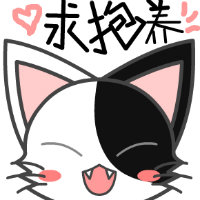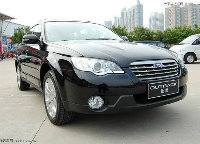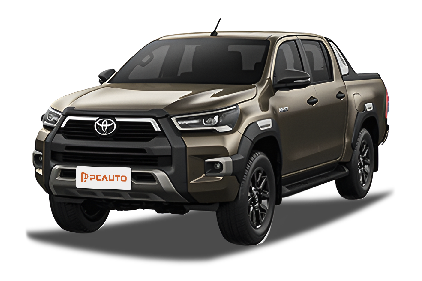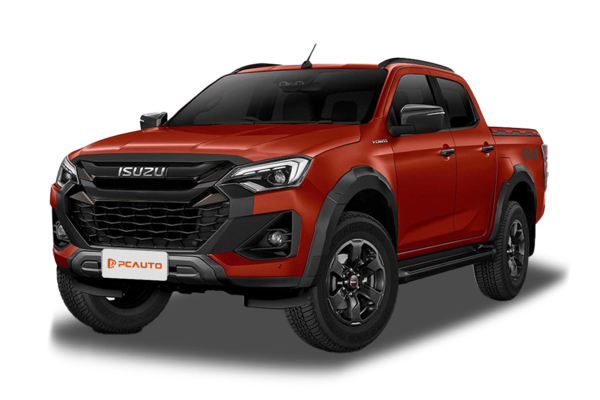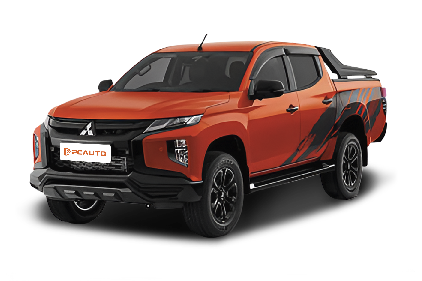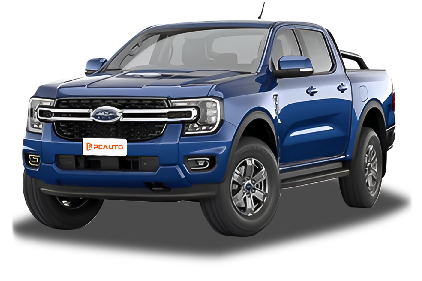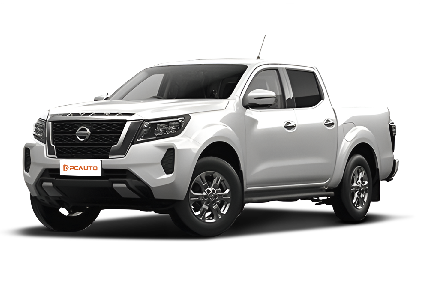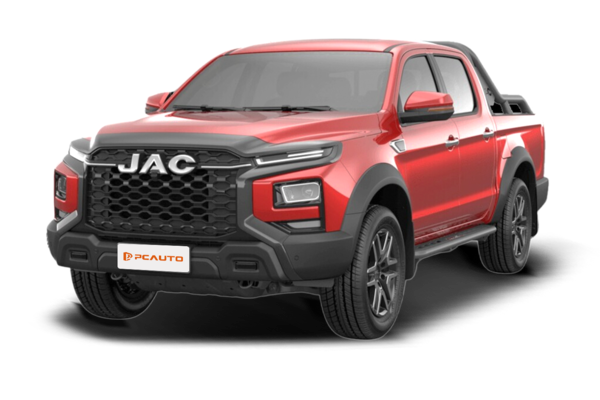Q
How to improve the fuel efficiency on Toyota Tundra?
If you want to boost your Toyota Tundra's fuel economy, here are a few angles to tackle it. First off, keep the truck in tip-top shape. Regularly swap out the air filter, spark plugs, and engine oil to make sure the motor's running at peak efficiency. And don't sleep on tire pressure – underinflated tires create more rolling resistance, which guzzles extra fuel. I'd suggest checking those pressures at least once a month and inflating 'em to the specs the factory recommends.
Next up, tweak your driving habits. Lay off the jackrabbit starts and sudden stops; keeping a steady speed is your best friend here. On the highway, cruise control is a lifesaver – it cuts down on unnecessary throttle jabs. Then there's the AC conundrum. Yeah, rolling the windows down feels nice, but at highway speeds, that wind resistance can actually make you burn more fuel than just cranking the AC.
For our friends in Malaysia, with that relentless heat making AC a must, make sure you're cleaning the AC system regularly to keep it cooling efficiently. Also, lighten the load – ditch the roof racks and any extra gear you don't need. Less weight and drag mean better MPG.
Fuel choice matters too. The Tundra can handle regular gas, but sticking to the octane rating Toyota recommends will let the engine perform its best, which in turn helps with efficiency.
Lastly, consider switching to a lower viscosity motor oil, like 0W-20 or 5W-20. Thinner oil reduces internal engine friction, which is a win for fuel economy. These little tricks aren't just about saving at the pump – they'll help your Tundra last longer too. Definitely handy for Malaysian drivers who do a lot of highway miles or haul cargo regularly.
Q
Which is the best exhaust system for a Toyota Tundra?
For Toyota Tundra owners in Malaysia, picking the best exhaust system means weighing up performance gains, durability, and local regulations. Two brands that come highly recommended are Borla and MagnaFlow. Their Tundra-specific exhaust setups do a solid job of boosting engine efficiency while delivering that nice deep, throaty growl we all love. Borla's S-Type series is perfect if you're after a balance of performance and daily driving comfort, whereas MagnaFlow's Overland line leans more towards off-road enthusiasts – the stainless steel construction holds up really well in Malaysia's humid weather.
When you're looking to upgrade your exhaust, it's super important to keep an eye on JPJ regulations. Make sure the sound level and emissions are all up to code to avoid any run-ins with the law. A good exhaust mod isn't just about upping power; it also reduces engine backpressure, which can actually help with fuel economy over time. But do yourself a favor and go to a certified shop for the install – you want to make sure everything plays nice with your truck.
Q
What are the trim levels for Toyota Tundra?
The Toyota Tundra is a full-size pickup that's been turning heads among Malaysian consumers. Trim levels can vary a bit depending on the market, but take the 2023 model year – it's typically offered in six main grades: SR, SR5, Limited, Platinum, 1794 Edition, and TRD Pro. The SR kicks things off as the base model, packing essential features like an 8-inch touchscreen and Toyota Safety Sense. Step up to the SR5, and you get a nice boost in comfort amenities. The Limited trim leans into luxury with leather seats and a premium sound system. For those wanting the top tier, Platinum and 1794 Edition cater to the high-end crowd with even more refined interiors and tech. Then there's the TRD Pro, built specifically for off-road enthusiasts, complete with upgraded suspension and all-terrain tires.
Now, for Malaysian folks, the Tundra isn't officially brought in by Toyota, but you can still get your hands on one through parallel imports. A couple of things to keep in mind, though: Malaysia's climate is hot and rainy, so it's smart to go for a version with good heat dissipation and rust-proofing. Also, since Malaysia drives on the right side, double-check that the vehicle complies with local regulations – that's crucial.
Full-size pickups are still a bit of a niche in Malaysia, but their serious hauling and towing capabilities make them a hit with folks in the construction industry or outdoor adventurers who need that extra muscle.
Q
What is auto LSD of Toyota Tundra?
The Toyota Tundra's Auto LSD (Automatic Limited-Slip Differential) is a traction control tech that uses the brake system to mimic a limited-slip differential, mainly for rear-wheel-drive models to optimize power distribution on low-traction surfaces like muddy or slippery roads. When the system detects one rear wheel spinning, it automatically applies the brakes to that wheel, sending torque to the other wheel with grip to boost your ability to get unstuck. Unlike a traditional mechanical LSD, this one doesn't need manual activation from the driver. It's automatically off when you're in 4H or 4L four-wheel drive modes, but kicks in when you're in 2WD – perfect for those rainy season puddles around Malaysia or light off-roading trips. Just keep in mind, Auto LSD is designed for temporary slip situations. Hammering it hard for long stretches could overheat the brakes. If you're planning on regular off-road adventures, you might want to look at models with a mechanical LSD or an electronic differential lock instead. For pickup truck owners, understanding the different traction systems out there matters. A mechanical LSD, for example, is tough as nails but can cost more to maintain. Electronic systems like A-TRAC, on the other hand, use more complex sensors to manage wheel slip. Each tech has its pros and cons – it really comes down to how you'll use the truck and your budget.
Q
How to fold down the rear seats of Toyota Tundra?
Folding down the rear seats in your Toyota Tundra? No sweat. First off, make sure the back seat area is clear of any gear. Then, hunt down the release straps or levers—these are usually tucked up top at the corners or maybe the center of the seatbacks. Give that release mechanism a good pull and gently nudge the seatback forward. It should fold down nice and smooth, opening up a ton more cargo space. Heads up though, some models might need you to slide the seat base forward or even lift the bottom cushion a bit first before you can fully lay the back down. When in doubt, your owner’s manual is the way to go for the exact steps.
For our friends in Malaysia, the Tundra’s rear seat setup, like a lot of American trucks, tends to prioritize versatility more than the Japanese or European models you might see around locally. Once folded, it’s all about flexible hauling—perfect for carting bigger items or gearing up for outdoor adventures. Oh, and don’t forget to check the seat hinges and release mechanisms every now and then to make sure they’re properly lubricated. That’ll keep everything moving smoothly and prevent annoying jams down the line. If you ever run into trouble getting those seats to fold, do yourself a favor and hit up a Toyota authorized service center instead of forcing it—you don’t want to break anything.
Q
Which is bigger? Toyota Tacoma or Tundra?
The Toyota Tundra is larger than the Tacoma. Although both pickup trucks are manufactured by Toyota, they are positioned differently and have significant differences in size. The Tundra is a full-size truck, whereas the Tacoma is a midsize pickup. The Tundra can reach up to approximately 6.4 meters in length with a wheelbase of around 3.8 meters, providing more spacious seating and greater cargo bed capacity, making it ideal for demanding towing and payload needs. In contrast, the Tacoma measures up to about 5.8 meters in length with a wheelbase of approximately 3.7 meters, resulting in a more maneuverable vehicle better suited for city driving and daily use. In the Malaysian market, where full-size pickups are less common, the Tacoma's dimensions are likely a better fit for local road and parking conditions. However, if you require superior towing and payload capacity along with maximum interior space, the Tundra would be the more suitable choice. Both models are renowned for their reliability and durability, catering effectively to different user requirements.
Q
How to remove the center cap of Toyota Tundra?
To remove the wheel center caps on a Toyota Tundra, first make sure the truck is parked securely and shifted into Park. Grab a flathead screwdriver or a dedicated center cap tool, gently slide it into the groove around the edge of the cap, and carefully pry it loose—take it easy to avoid scratching the wheel or the cap itself. If the cap feels tight, work your way around the circumference, applying even pressure at multiple points. On some newer Tundra models, the center caps might have a snap-on design; in that case, you can just press the center from the backside with your hand and it should pop right off.
It’s worth noting that the mounting style can vary between model years and trim levels, so take a second to check out the cap’s design before you start prying. Here in Malaysia, with our hot and rainy weather, center caps that have been on for a while can get pretty stuck due to metal expansion or built-up grime—spraying a little WD-40 to loosen things up usually does the trick. For regular maintenance, give the cap seams a quick clean every now and then to prevent dirt and sand from gumming up the works. If a cap’s clips break, you can replace just the cap instead of the whole wheel, which is good to know. And if you’ve swapped in custom center caps with brand logos or designs, those aftermarket pieces often come with their own removal tools—keep the instruction manual handy for future reference, trust me.
Q
How to replace the front shock absorbers on 2008 Toyota Tundra?
To replace the front shock absorbers on a 2008 Toyota Tundra, you'll need tools like a jack, jack stands, socket wrench set, and spring compressor. Start by parking the truck on level ground and engaging the parking brake. Jack up the front end and secure it with stands, then remove the wheels. Loosen the top bolts of the shock absorbers—make sure to mark the suspension components' positions for proper reinstallation. Use the spring compressor to carefully compress the coil springs before removing the old shock assemblies. When installing the new shocks, align all parts with the original marks. Finally, torque all bolts to spec and get a wheel alignment done.
Here in Malaysia's hot and rainy climate, it's a good idea to replace shocks every 80,000 km or if you notice leaks or strange noises. Stick with OEM or reputable brands like KYB; they handle our local roads better. If you don't have the right tools or experience, better leave it to a registered workshop. Botching the install can hurt handling or even damage suspension parts. Oh, and while you're at it, regular suspension checks help catch worn ball joints or control arm bushings early too.
Q
How to improve the fuel efficiency of a Toyota Tundra?
If you want to get better fuel economy from your Toyota Tundra in Malaysia, you can focus on three areas: driving habits, vehicle maintenance, and lightweight modifications. First off, drive smoothly – avoid jackrabbit starts and hard braking. Try to keep the revs below 2000 RPM, and use cruise control on the highway to cut down on unnecessary fuel consumption fluctuations. Next, stick to regular maintenance: change the air filter, spark plugs, and oil as scheduled. Make sure your tire pressure stays at the manufacturer's recommended level (usually 220-240kPa) because underinflated tires increase rolling resistance and guzzle more fuel.
Also, ditch the roof rack and any other unnecessary extra weight you’re carrying around. And ease up on running the A/C at full blast all the time – those little things add up to better fuel efficiency. One thing to note: Malaysia’s hot and humid climate puts extra demand on engine cooling. I’d recommend cleaning the throttle body and fuel injectors every 20,000 kilometers to prevent carbon buildup from hurting combustion efficiency. If you’re someone who does a lot of highway driving, upgrading to low-rolling-resistance tires could help, but just remember to balance that with wet weather grip – safety first, always. A hybrid Tundra would be a more fuel-efficient option if it ever launches here, but for now, tweaking how you drive your current model is the way to go for saving fuel.
Q
What is the payload capacity of a Toyota Tundra?
The payload capacity of the Toyota Tundra varies depending on the model configuration and model year. For the latest Tundra models, you're typically looking at a payload range of around 1,500 to 1,900 pounds (that's roughly 680 to 860 kilograms). But to get the exact number, you'll want to check the vehicle's door jamb sticker or the official specs sheet—payload can change based on the chassis setup, whether it's 2WD or 4WD, and any optional packages you throw on, like an off-road kit or towing package.
For our friends in Malaysia, a couple of things to keep in mind: local regulations might have specific limits on pickup truck payloads, and let's not forget that tropical climate can affect how your truck holds up under constant heavy loads over time. It's a good idea to regularly check your suspension and tire condition to keep everything in top shape.
Payload is a big deal when it comes to pickups, right? It's directly tied to how strong the truck's body is and how the suspension is engineered. If you find yourself regularly hauling loads close to the max capacity, maybe think about upgrading to heavy-duty suspension components or commercial-grade tires. And always make sure your cargo is evenly distributed—you don't want any safety risks from unbalanced weight.
If you're shopping around, payload numbers from competitors like the Ford F-150 or Chevrolet Silverado can give you a good benchmark. But at the end of the day, your choice should really boil down to your specific needs and budget.



